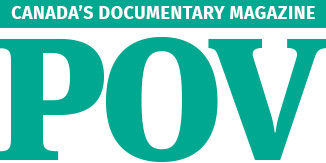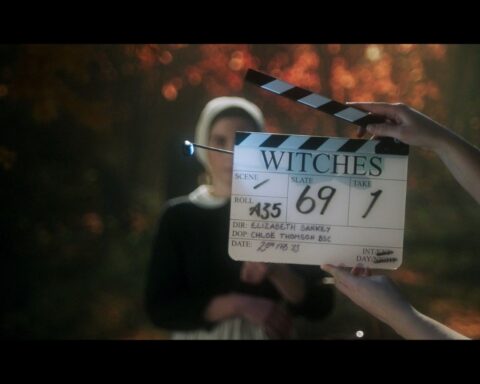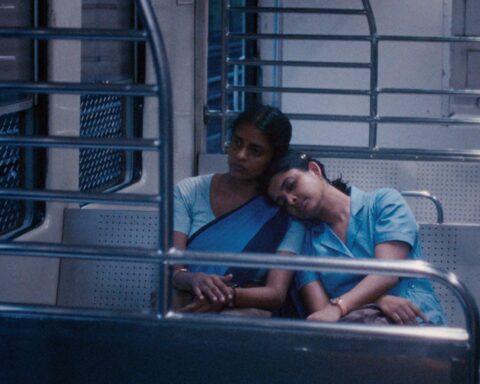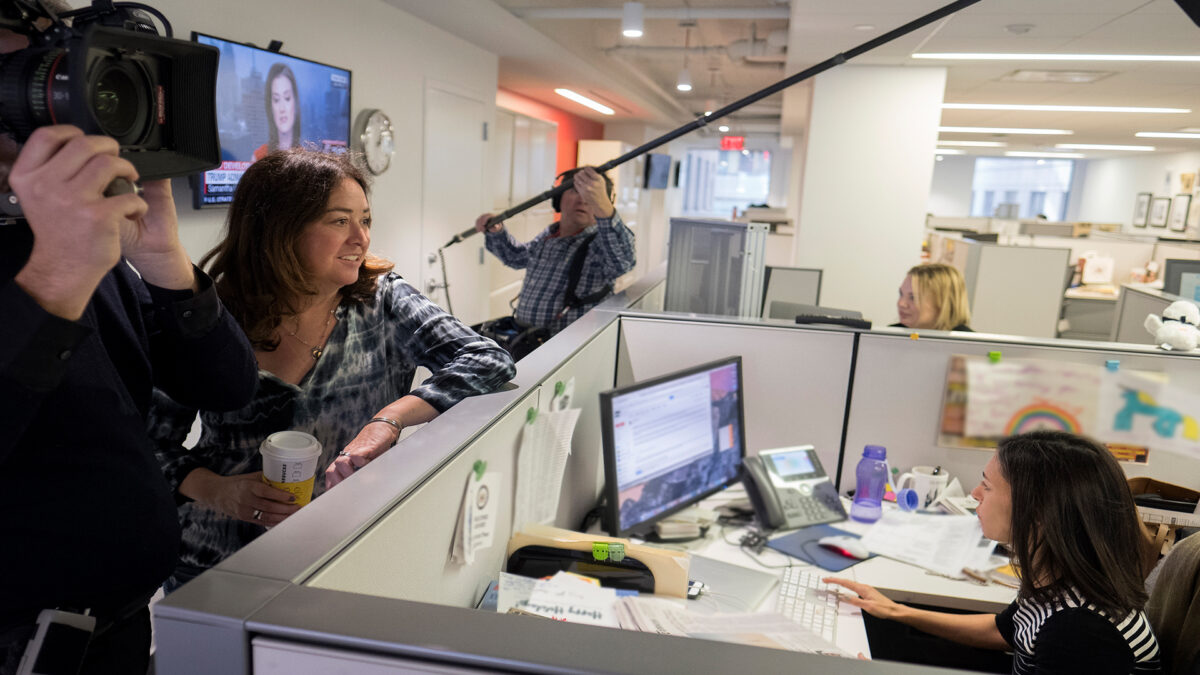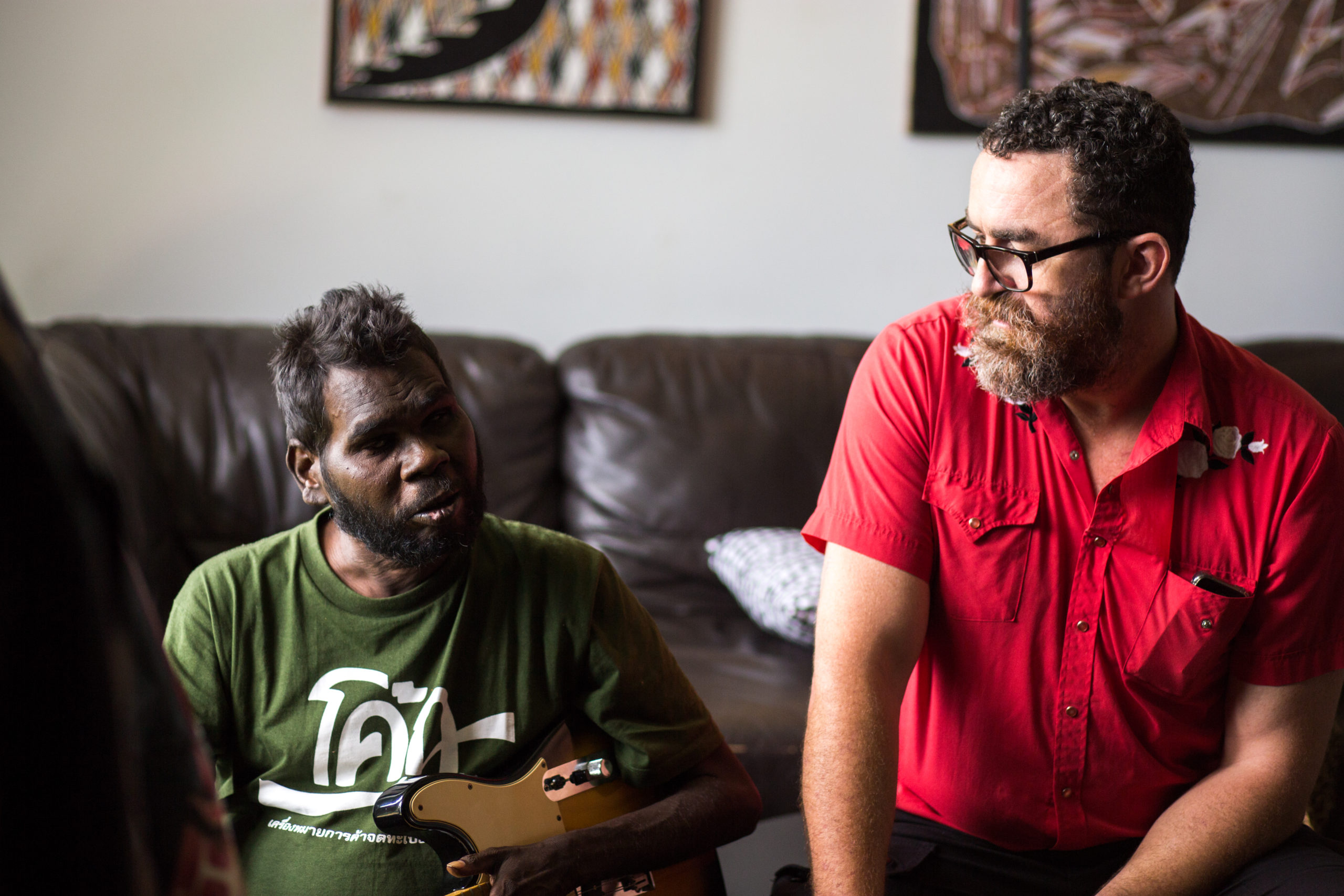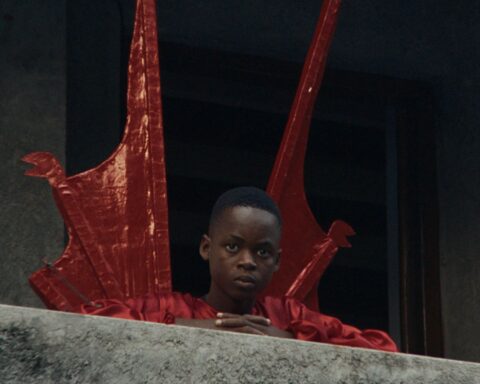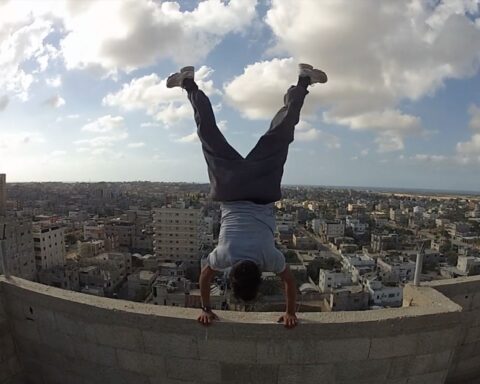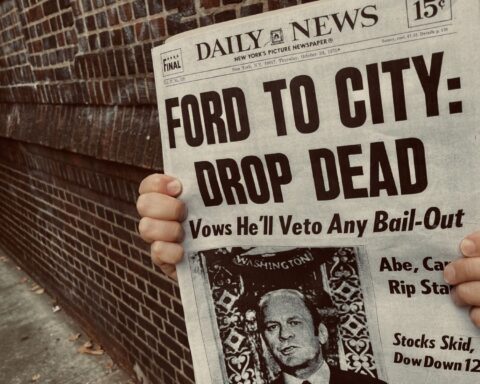The deserved honouree at Hot Docs of this year’s Don Haig Award for a career as an independent producer, Ina Fichman, is feisty, sincere and determined. A genuine dynamo, she works tirelessly for her filmmakers and films. The Montreal native has all the qualities you’d want in a producer: she knows how to finance and distribute work, has an instinct for picking solid projects and can zero in on what can improve a film. POV had the opportunity to speak with Fichman about her career during Hot Docs.—Marc Glassman
POV: Marc Glassman
Ina: Ina Fichman
POV: Congratulations on all the films you’ve produced, Ina, and the Don Haig Award.
Ina: Thank you. I’m quite honoured.
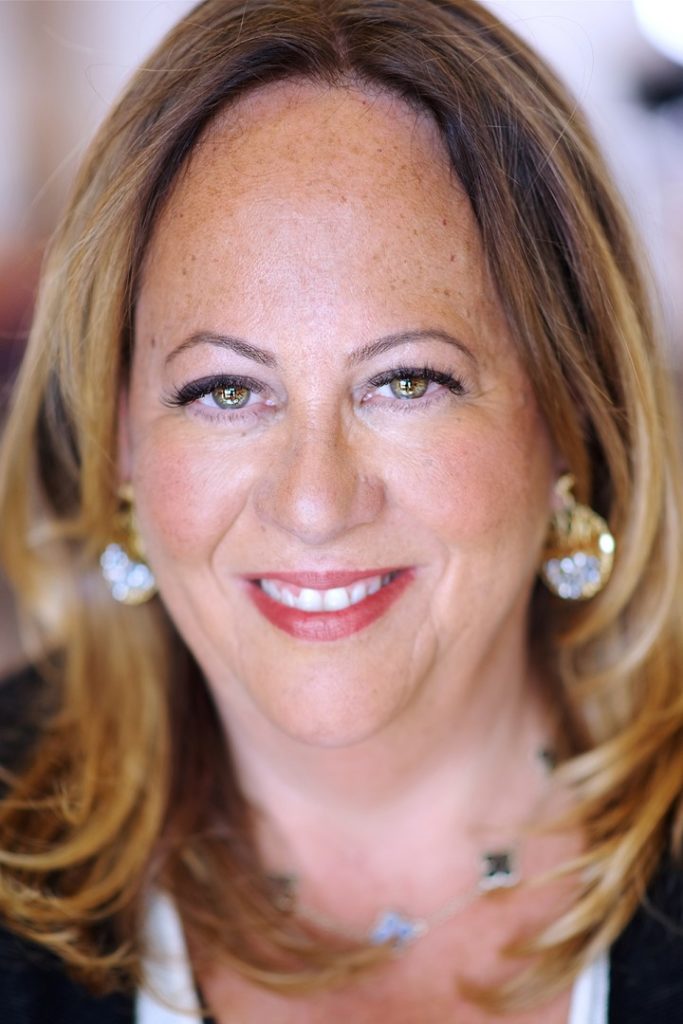
POV: Why don’t we start off by talking about your current work, the films that are at Hot Docs? I’d like to begin with Laila at the Bridge, a personal view of an amazing woman who is saving drug addicts in Kabul. Can you tell me about how it got financed?
Ina: I’ve spent a lot of time in Los Angeles over the last few years, because there’s a wonderful documentary community there, and some resources for films. A good friend of mine introduced me to Gulistan and Elizabeth Mirzaei. They had lived in Afghanistan for eight years—he’s Afghan; she’s American—and they spent three years shooting footage with Laila and the addicts. They had been selected to go to Deal Maker at Hot Docs. They had shot the footage; they had done a Kickstarter campaign in the early days and had raised some money so that they could shoot; but they had never really raised enough money to finish shooting the film and to edit and post-produce it. So, I looked at the trailer, and met them at their apartment in Los Angeles. The trailer needed some work but it seemed like there was something potentially interesting in the footage.
I sat with Elizabeth for a few hours, and said, “Show me what else you have here.” I started to ask her questions while she showed me footage, and I went, “Holy moley”—talk about a trailer not serving a film. I said, listen, we’re going to go to Deal Maker together, but we have to re-cut the trailer.
And so I got involved. We sat, we recut the trailer, we came to Hot Docs and we started having conversations with potential buyers. Marc, you know how long it takes to make a deal with anybody, but in the end, I brought on board four broadcasters and got more money from funds. We had a Canadian editor, a Canadian composer, and Canadian voices for the French-Canadian version. We did all of our post in Canada as well.
It had its world premiere at CPH:DOX, where we won the F:ACT Award, which is essentially for best creative-journalistic feature doc.
POV: You must have got right away that Laila is one of those great documentary subjects—she’s so charismatic.
Ina: Absolutely. But the challenge of a film like this is that, yes, she’s charismatic, but she’s a badass. So, a lot of the editing process was about how to have a balanced character—someone who’s tough and can be a pain in the ass, but is also very compassionate and can’t show too much of her vulnerable side, because she’s dealing with addicts. It’s not about being compassionate all the time; you have to be tough.
POV: Well, it works very well, and kudos for making this one happen. Your other film at Hot Docs, The Oslo Diaries, tells the story of the attempt in the early ‘90s, which stated with secret talks in Norway, to create peace in the Middle East. At one point, Israel’s Prime Minister Yitzhak Rabin and PLO leader Yasser Arafat signed a treaty with President Bill Clinton, but then it all came apart. How did you become involved with The Oslo Diaries?
Ina: I saw Censored Voices, the previous film made by Mor Loushy and Daniel Sivan at Sundance, and loved the film. I’ve known their Israeli producer Hilla Medalia for many years as well. My film, The Wanted 18, ends with the Oslo Accords. I’ve made many films from the Middle East, and people often refer to these Oslo Accords, and I never really quite understood what happened. So, when I heard the pitch for The Oslo Diaries, I thought, this is a film that must get made: I mean, what happened? What was going on behind those closed doors? Who was committed to making the peace process work, and why didn’t it work? And I think that, ultimately, the film accomplishes not just telling that story, but engaging an audience in the emotional rollercoaster of trying to make this happen. The Oslo Diaries is, on the one hand, hopeful, because you go, “Wow, they almost got there,” but it’s also depressing, especially in light of what’s going on today.
POV: Absolutely. It’s a real tragedy. So, tell me about when you got involved—was it early days?
Ina: Oh, it was very early days. They hadn’t even started shooting yet. I think it was either at the Israeli co-production market, or—I really don’t remember where—where we decided to work on the film, and Jean Pelletier from Radio-Canada, who has supported all of the films I’ve done in the Middle East — The Wanted 18, Vita Activa: the Spirit of Hannah Arendt, a film we did about the Dead Sea — immediately said he wanted to get involved, which was wonderful, and then I built my finance plan in Canada from there. I’ve been very lucky that SODEC has been a big, big supporter of almost every film I’ve done in that region, just because there aren’t that many Quebec producers who are there. I make a diversity of films; it’s not like I just work with the same filmmaker every time. I’m working with many different directors in Israel and the Palestinian territories. So, they’ve been very supportive. I built my finance plan from there: I got SODEC, I got Rogers—Robin Mirsky has been a tremendous supporter of these films—plus the usual tax credits, and then Bruce Cowley at the CBC heard the pitch I think at IDFA, and he came on board as well, for a small amount.
POV: When you’re talking about a film like The Oslo Diaries, what kind of budget level did you want to get to?
Ina: I think our whole budget in the end was about $1.2 million. There was a large license fee on the Israeli side from Arte in Germany.
POV: That helps a lot. Whereas with Laila I would assume it was quite a bit less—would that be true?
Ina: Yes, absolutely. But it’s very hard when you talk about budgets. A lot of Laila had been shot on their own dime. With Oslo, we needed a budget for all the archives and re-enactments in the film. We couldn’t have done it any other way. With Laila, I don’t even want to talk about the budget level, simply because we needed to have enough time to edit it, do good post-production, have a great composer, and do some additional shooting.
POV: It’s also really hard, I would imagine, to judge what three years of two people’s lives are worth. It’s a crazy amount—it’s imponderable.
Ina: Exactly. Elizabeth and Gulistan’s attitude was like the American way of thinking about documentaries, which is you go and shoot at least a good chunk of it, and then you raise money. It is not how we do things in Canada. In our system, we’re blessed in many ways, having the resources that we have. But, it would be wonderful if we could also encourage a little risk-taking, in terms of broadcasters saying, “Here’s some money, go and shoot for three weeks, and then come back and show us what you’ve got.” Not just, “Write a 30-page treatment.”
POV: Which in some ways seems completely absurd. Can you imagine writing a script for Laila? It would be impossible.
Ina: Impossible. And yes, we had to write treatment after treatment to submit to Tribeca or to other places, but it was based on an in depth knowledge of the story and characters. It was a little bit different than the exercise of writing a documentary script, and then being told, “Oh wow, this is a good script.” How do you know?
POV: Right. Would your relationship in this case be more with your co-producer, or would it be closer to being with Mor Loushy and Daniel Sivan?
Ina: Oh, all three. We all worked very closely together. Mor and Daniel came to Montreal for three weeks for post-production, and we gave a lot of notes on the cuts.
POV: It must have been hard, because it’s such a complicated story. So, was one of the major issues here being able to access what’s out there in terms of visual and written records? Because it’s a history piece—it’s not that long ago, but it’s long enough that a lot of the major people are gone. That costs a lot of money—and how about access to the diaries? How did they get access to various, both oral and written accounts of what was happening?
Ina: Some we were given, and for others we had to make deals with publishers. Some are diaries, like literal diaries, and others are excerpts from books and writings and letters. Mor is one of the best researchers in documentary—she is really extraordinary when it comes to finding sources. That was a strength of this film in many ways. And then, how do you tell the story when the whole thing is behind closed doors? So, we did these re-enactments that are based on interviews and diaries, and sometimes you don’t even know they’re re-enactments, because we shot it on Betacam.
POV: That’s very interesting. So, in a case like this, would they come back to you with cuts, and you would just simply say, “Good, but here’s more questions”?
Ina: Always, of course.
POV: Were there any particular challenges in terms of getting it done in the proper amount of time and the proper amount of money?
Ina: Well, it was an expensive film. But, I feel we had enough time in the end, because the fine cut was what was sent to Sundance; it wasn’t a rough film. Look—it’s always about managing your resources in a project like this, because everyone’s ambitions are very high, and archival costs are extraordinary, but we did fine in the end.
GIFT-trailer from Gaudete Films on Vimeo.
POV: Well, it’s an amazing piece of history, and congrats on that, too. Can we talk about another film you produced that has just been completed, Robin McKenna’s Gift? It’s an essay film based on a terrific book by Lewis Hyde. When did you get involved with that?
Ina: A few years ago. Robin had done some development money from Super Channel, and some private donors as well. As you know, Peter Wintonick had passed away, and he was supposed to produce it. After he was gone, the film kind of just sat there for a while. So, I got involved, and it’s interesting, because in the original proposal there are a number of stories that are no longer there. There was a story in India, and she was looking for a fourth story. It was still relatively early days, and all we knew for sure that we wanted to shoot was a potlach, and of course Burning Man. There are some new ones: the performance artist Mingwei story and Rome story (which is about a squat run by an artist collective).
POV: So that’s a lot of the film that really still had to happen.
Ina: Exactly.
POV: You must have had an intense set of conversations with Robin to figure out where it was going to go, because the film is about the creative process.
Ina: Yeah, it was a very intense creative process, too! Even after the film had been shot, the whole editing process was rigorous. Robin consulted with me and other filmmakers and we had screenings in Montreal and Toronto at different stages of the cut. Robin wanted a lot of feedback for the film to make it the best it could be.
POV: You work with so many directors. From your perspective, how do you build creative relationships? Is that part of the excitement for you?
Ina: Absolutely. Working with Sturla Gunnarsson on Monsoon, for instance: Sturla is very experienced and I had no doubt that he would be able to do a magnificent job with the work that he did in India. Of course, there were many discussions, because we were shooting in a monsoon for three months. I mean, how do you do that, and who would shoot the film? I think I found the best person—Van Royko—he’s someone who is super creative and a beautiful shooter. That’s not to say I didn’t have input and feedback—I sat and watched cuts and discussed the script with Sturla, and we did go through quite a lengthy development process with The Nature of Things and ARTE before we shot the film. Sturla went to India; we wanted to find characters; that’s where he discovered this young girl.
But it’s a very different conversation when you have Sturla with Nick Hector editing a film, than when you have Elizabeth and Gulistan, who had never done a feature doc. They are incredibly talented, smart and open-minded filmmakers who truly rose to the occasion in collaborating with the editor, story editor and the rest of our team. As a producer, I just enjoy working with all levels of creators. It’s never easy, and it’s always that balancing act of money and creativity and audience.
For me, the most important thing at the end of the day is not just to make a great film, but to get it out there and make sure it gets to the audience that it needs to get to. That’s a lot of work, and that’s where I put a lot of thinking into, okay, how are we going to do this?
The Oslo Diaries will be seen on HBO in September, but what can we do before that to generate interest, discussion, dialogue about a film that has that kind of potential? Gift has connections to the gifting community and Burning Man and the art world and all of that—so how do we get the film to those people? Laila at the Bridge is a story about addiction; it’s a woman’s story; it’s a story of resilience; it’s a story of Afghanistan, so how do we reach out to those communities to make sure that they see the film?
The real key for me as a producer is to ensure that these films have a life after being on the festival circuit. I have to say, Gift is taking a different route: we are about to sign a US distribution deal for educational, non-theatrical museum and community screenings, DVD and all of that, which is fantastic.
POV: And I suppose it’s true in some cases that even if the film does okay at festivals it doesn’t necessarily mean that it’s going to be picked up for distribution, and maybe the TV sales won’t come as easily as they should.
Ina: Absolutely. The advantage of a film like Laila is that we already have quite a few international TV sales and everybody knows everybody, so I’m quite confident that in the end we’ll close the rest of these TV deals. Right after we screened at CPH:DOX, I got notes from various broadcasters saying they’d love to see it. So, that does help.
POV: For you, how important is it to have those contacts—to have spent all of those years going to festivals, getting to know so many people in the documentary and the broadcast communities?
Ina: I think that’s a double question—it’s very important to have all these contacts in the documentary world. We’re a community. It’s broadcasters, it’s co-producers, it’s funders. I think it’s wonderful, and we all love and support each other’s work, and that to me is so critical to enjoying what we do, because it’s so tough. On the other hand, when you talk about having contacts with festivals—the festival game – when people walk around and call themselves festival advisors, I sort of chuckle, because festivals take films for very different reasons. It’s like curating an art show—you don’t want 20 pieces that all look the same—so there can be films that are wonderful films that don’t get into festivals, because, say, they already have a film about cyclists in India. (I know I’m being very specific with that example.) I think, yes, people know who I am, but there are many filmmakers out there, and there are many really worthy and wonderful films.
POV: Then what impact do festivals have on the broadcast world? I mean, they must be aware of that, too. As much as broadcasters enjoy going to a festival—who wouldn’t enjoy going to a festival if you’re going to be treated nicely—how important is it to be in those festivals?
Ina: There certainly is an impact but every film has its own path and distribution story. For us to be at Sundance with The Oslo Diaries was wonderful, because the deal was made with HBO, and it was great to announce it there. It’s such a difficult question. Hot Docs is one of the great festivals in the world, and it’s such a great honour to be there, but I always try to manage mine and my filmmakers’ expectations by saying, “Listen, we want people to come out to the screening and we want a buzz to be generated about the film,” but what does it mean in a concrete way? I don’t know. It’s difficult to know. It is important to “work” a festival but we must remember it takes time to build momentum for a film. When we screened Laila at the Bridge at CPH:DOX, we were invited days later to another festival in the UK. Then, someone we met at CPH who runs a theatre dedicated to documentaries in the UK saw the film in Copenhagen and will now screen it at his theatre, Doc House, in the Fall. This is great for our film! And, I think that being in Hot Docs does give a lot of credibility to documentaries as it is both a festival and a market and so well-respected worldwide.
POV: Can you talk a bit more about what happens to films after the festival buzz is over?
Ina: Absolutely. I’m very committed to doing impact distribution for my films now. I feel that’s the only way, not just to monetize your films, because documentaries can make money, but also reach audiences and have an impact. So, I started a distribution company and am trying to raise some money for that now, which will be focused on impact campaigns for documentary. Not just thinking about the festivals but thinking about reaching those audiences that would be most interested in your movie.
POV: I hadn’t realized you had your own distribution company—what’s it called?
Ina: It’s called BE.IN Media. It’s very new and we’ll be launching this Summer in Canada.
POV: So, nothing has actually been distributed that way yet.
Ina: It will be shortly. I’ll be starting with The Oslo Diaries in Canada.
POV: Why don’t we flip back to the beginning—when did you start getting involved in the film scene in Montreal, and how quickly did you decide that you wanted to be a producer?
Ina: Very quickly. I actually started as a journalist at the CBC, and I always wanted to work in film and did radio documentaries primarily. I loved it, and always loved the documentary form, and at that time everyone was getting into TV and nobody wanted to know from radio documentaries.
POV: When would this have been?
Ina: The ’80s.
POV: Did you meet Lindalee Tracey then?
Ina: Yes.
POV: Oh you did! Obviously there were a lot of really talented people in that period who were doing wonderful radio documentaries.
Ina: Oh it was amazing. A lot of us were in Montreal. It was a phenomenal place to be. Anyway, after a while, I did some work on TV in Montreal and Quebec City, but I’d always wanted to make films, so I basically quit my job at the CBC.
POV: Big move, to quit.
Ina: Yeah. I was in my late 20s, early 30s, and I said, you know, I’m just going to quit. At that time there were two possibilities for me in terms of working in production. One was that there was a small production company looking for a producer, and they were doing very creative work, and the other was a big producer in Montreal who was looking for an associate producer slash assistant, but he was really well known. I decided to go with the small production company, because I figured I could do more of my own thing there. So I started off, and in the early days of my career I produced a lot: commercials, music videos, a 30-minute short film in French, and even a dance film. I was in the Quebecois scene, working mostly in French. I guess the first real documentary I directed and produced was Moving Mountains, about Dora Wasserman’s Yiddish theatre group going to the former Soviet Union. Local CBC gave me a bit of money and some equipment and I went with a cameraman and we shot this wonderful film that ended up with educational distribution in the US. We had a screening at MOMA and screenings in Montreal. That was really my first foray into documentary, even though I’d come out of journalism and come out of radio documentary. For my second doc, I produced Albert Nerenberg and Catherine Bainbridge’s OKanada. Albert snuck under the lines at Oka during the crisis and came back with all this footage, and we edited it, and it became a film that people wanted to see.
POV: Right, I remember that one.
Ina: I knew this was what I was going to do, and what I liked about my work, which is what I still like about my work, is that there are new stories, new people and new challenges making every movie.
POV: When did you decide to form your own company?
Ina: A long time ago. I always had my own company with partners over the years, with different names, but it was always driven by me and my projects. At one point, I worked for Rock Demers’s company, Les Productions La Fete, for about five or six years. I did a lot of youth television at one point in my career, and I had done a feature or two, before I ended up at Rock’s company. I was the associate producer of The Return of Tommy Tricker, which was really a lot of fun.
POV: Rock did some very good films. He had big successes.
Ina: Yeah, it was a real learning experience for me. So I was there for a number of years, and then I had my son, and then I went back to being an independent producer, and I’ve been one ever since.
Marc: Do you feel it’s been a good thing to have had that full background? To have worked in fiction and…
Ina: Yes, I do. The factual kids’ stuff I produced is still some of my favourite work. But the turning point for me in terms of creative documentary was when I produced Helene Klodawsky’s Undying Love.
POV: Tell me about that.
Ina: Undying Love was love stories that emerged out of the Holocaust, and we actually pitched it at the very first Hot Docs Forum. It was a really extraordinary experience, because Helene is a brilliant, creative director. She came with a pretty standard documentary idea, and together we really raised the bar for her as a filmmaker, and that’s always exciting to me—whether someone’s a new filmmaker or a veteran, to always raise that bar, challenge our storytelling forms and content. I think that’s what keeps filmmakers moving or growing, and as a producer it’s always exciting to do that work.
POV: I’m wondering if you could tell me about your favourite films.
Ina: Every film that I produced has very special memories. I have enjoyed producing them, releasing them and working with the creative teams, but I must say that there are three films that have really marked my career and me as a producer on a very spiritual level. Of course, one is Undying Love. Our first shoot ended up being on 9/11 and that was incredible.
The Holocaust survivors who we were profiling basically said to us, “Listen, we went through the Holocaust, don’t stop for us, let’s continue and tell our stories.” The end result was a very special film and I feel that it’s one of the gifts of my career.
Another film that really marked me as a producer was The Wanted 18. Working with Amer Shomali and Paul Cowan and our animation and documentary teams in creating an innovative way of telling a story was an extraordinary experience. When the film was completed, we had a very special film screening in Ramallah for 1,500 people, many of whom had lived in the town when the events in the film took place. They laughed and cried throughout the screening. It was absolutely one of the highlights of my career.
And, the third of my favourites, which really made me think and affected me profoundly is Laila at the Bridge. Working with Elizabeth and Gulistan was powerful; their humility, commitment and generosity really touched me. And of course Laila’s story—she’s such a strong bad-ass woman. It is really a story for our time.
POV: Can you respond to winning the Don Haig Award?
Ina: It means so much to me especially since it’s coming from my colleagues in Canada. I know our documentary producers are warriors and, like me, fight every day to tell truthful stories in creative, inspiring ways. So it’s a tremendous honour to receive this. There are very few opportunities when we, as creative producers, are recognized for our work with directors, writers and crew. I think there’s been more of a recognition recently; for example in the United States, the Sundance Institute has really been focusing on creative producing.
I think the recognition of the creative producer is really paramount to our ability to move forward as a community. The sustainability of the creative producer, building small businesses, juggling many films and getting the kind of support we need to do that. In Canada we sometimes have a tendency to want to support large infrastructures. But the documentary community is all about small sustainable companies that keep their projects true to their roots and distribute them in a way that is true to what each project and each community deserves. And also, to have the capacity to continue onto the next project, to develop it and to sustain your business while you’re doing so. And I feel that’s me. I have colleagues in the United States, who started a group called the Documentary Producers Alliance and I’m a part of it. We strive to do something that is really quite unique. And we deserve respect for it.
One thing I’d like to mention, and we didn’t talk about this before, is the part of my award which I get to pay forward. One of the wonderful things about this award is I get to give $5000 to a young duo of female producers, Fanny Drew and Sarah Mannering of Colonelle films. I met these two women at the Cannes Film Festival last year and was really impressed with them. They produce documentaries and narrative films and have a lovely film at Hot Docs called Snowbirds. They’re fantastic.
POV: Can you comment on being a woman in the film industry? Have things gotten better?
Ina: I was one of the founders of Montreal Women in Film and similarly a founder and president of Women in Film and Television International. Some of my concerns about the role of women in the industry have been part of my reflections for a long time. I think it’s fantastic to finally hear an acknowledgement that there’s been a problem. I think in documentary along the directing side has been a bit less of a problem, although the bigger budgets still generally go to the men. Is it still a challenge? As a female producer, I’ve had to be a tough chick throughout my career and a man who is equally tough is never acknowledged as such. But I think it is time for women to thrive. It’s the best time.
I’m not going to get into details of cases I’ve heard of sexual harassment throughout my career, not that I experienced it, but women who came to me, who told me horror stories about men who were prominent in our business, in the documentary business and not in the usual Hollywood business. And I’ve had to listen to these stories for a long time.
I hope it’s changing. I’m cautiously optimistic but I don’t think we can let go. I think we have to be relentless.
Learn more about Fichman’s films at Intuitive Pictures.
Hot Docs runs April 26 to May 6. Please visit hotdocs.ca for more info.

